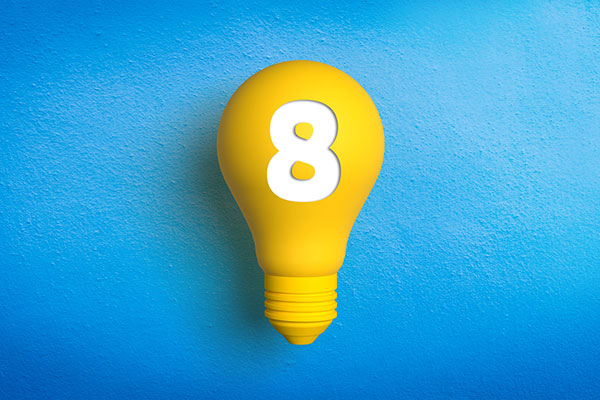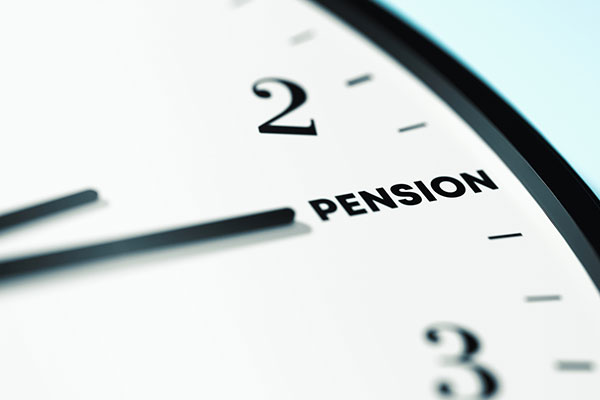Eight things you need to know about income drawdown
Taking retirement income flexibly can be a great way to fund your lifestyle in later life, but Faith Glasgow says you need to approach your decisions with care.
12th June 2024 11:43

If you have a defined contribution (DC) pension, where you save and invest to accrue a pot of money, and are thinking about your impending retirement, you’re almost bound to have come across the term “drawdown”.
Flexi-access drawdown accounts, to give these more investor-friendly retirement products their full unwieldy title, were introduced by then-Chancellor George Osborne in 2015 as part of pension freedoms. Since then, they have become the mainstay of many people’s retirement finances.
- Invest with ii: Open a SIPP | ISA vs SIPP | What is a Managed ISA?
So, you probably know that drawdown is one of the main ways you can start making use of your pension pot. But do you understand the process involved in setting it up, the way it’s taxed, the investment choices or exactly how flexible it is in reality?
Below, we set out to demystify drawdown, starting from first principles.
1) What actually is a drawdown account, and how does it differ from the pot I’m currently contributing to?
One of your options once you decide to access your pension pot is to move some or all of it into a drawdown account. There, it will remain invested and growing, but you’ll easily be able to withdraw an income from it.
Indeed, the two pots - for pension accumulation and decumulation, in the jargon - can run side by side.
- Sign up to our free newsletter for share, fund and trust ideas, and the latest news and analysis
- Ask ii: what are my pension access options at age 55?
As Kate Smith, head of pensions at Aegon, explains: “It’s possible to continue to have ‘accumulating’ pension accounts where you keep paying in pension contributions, and also have a separate drawdown account where you are accessing a pension income.”
(However, if you’re still in paid employment, there are tax considerations to bear in mind; see question 7).
If you’re saving into a self-invested personal pension (SIPP), the two functions may be combined within a single account, so you simply “switch on” the drawdown facility as and when you get to that stage.
2) Who provides these accounts?
Pension providers such as insurers and online brokers - interactive investor, for instance - run drawdown products, as do specialist drawdown providers. In addition, Smith notes, some master trusts have partnerships in place to offer drawdown to members of occupational pension schemes.
Just as with annuities, it’s worth shopping around for the deal that suits you best in terms of set-up, ongoing charges and investment options. “Access to drawdown products with most providers (including Aegon) are only for those people who take regulated advice, but there are some drawdown providers that allow you to ‘do it yourself’,” says Smith.
- Pensions case study: the final yards to retirement and beyond
- Six retirement income mistakes and how to avoid them
She adds that some people use regulated financial advisers to help them select and set up the scheme and initial investment decisions, then run it themselves; others use financial advisers on an ongoing basis. Online brokers such as interactive investor fall into the DIY category, although broker customers could opt to take advice.
Victoria Ross, a chartered financial planner with Progeny, warns that you do need to keep your wits about you when selecting a drawdown provider. “If you are looking to transfer your pension or pensions into a modern drawdown scheme, check with your ceding provider that there are no guarantees on your current pension, such as a guaranteed level of income.”
3) At what stage should I set one up? Will I be prompted to do so by my pension provider?
You can normally set up a drawdown account any time after age 55 (rising to 57 in 2028); if you have a lower protected pension age or qualify due to ill health, you may be able to do so earlier.
But you won’t be reminded or prompted: it’s up to you to instruct the provider when you want to start taking a pension income, or switch on the drawdown facility if you have a SIPP.
4) Do I have to move all of my pension pot into a drawdown account?
This is one regard in which the flexible nature of drawdown compared with other pension income arrangements really becomes apparent.
You could use your drawdown account to consolidate a bunch of pensions from previous jobs under a single roof, or transfer a single pension pot. You could move it into drawdown all at once or in chunks over time. You could just move part into drawdown, and take the rest as cash or use it to buy an annuity. It’s entirely up to you.
Similarly, says Smith, withdrawals are extremely flexible: “You can access your money as and when you like. You can take regular withdrawals, or simply take out money as and when you need it.”
But, she cautions, beware of the small print. “Drawdown products may allow a number of free withdrawals but can charge for extra ones.”
Money in the drawdown account can also be used at a later stage to buy an annuity that will provide a guaranteed income for the rest of your life. That can become a more attractive proposition as you get older (and security perhaps becomes more important), particularly as annuity rates become more generous with increasing age.

5) Should I choose different funds from those I used to build my pension? What sort should I be looking for?
Generally, yes. Building a pension pot tends to involve funds with a focus on growth, while funds used in drawdown are likely to be designed to produce income (although in some cases this may be taken partly from investment growth as well as payouts). Again, though, you have great flexibility as to where you invest.
The Financial Conduct Authority (FCA) requires drawdown providers catering for non-advised investors to offer them a choice of simple, affordable investment options known as Investment Pathways, designed to suit different retirement time scales and aims.
- 8 things you must know about building a retirement portfolio
- How to build a £1 million pension and ISA portfolio
The idea is to make it easy for drawdown users who don’t take financial advice to find an investment solution that will do what’s needed to meet their retirement income requirements.
But other investors build and run their own drawdown portfolios from the broad range of funds and investment trusts available, or use an adviser to help them get started (and in some cases offer continuing support).
6) What should I expect as far as tax is concerned? Will I be taxed automatically at source?
Most people can take 25% of their total pension pot tax-free. “Commonly, people take a tax-free lump sum before they move the balance of their funds into a drawdown account,” says Smith.
But unless you have specific plans for the money, it may be more sensible to phase your tax-free allocation instead. This way, if you move a chunk of pension into drawdown, the first 25% of income will be free of tax, with subsequent withdrawals only taxed once they exceed your personal allowance (currently worth £12,570 a year).
The good news is that you probably won’t have to do anything about declaring tax. Says Ross: “Where there is tax due, it is paid by the provider (‘at source’) via PAYE, just like employment income.” This is done using your tax code.
The not-so-good news, as Smith observes, is the risk that if your provider doesn’t have an up-to-date tax code for you, your first payment will be taxed using the higher “emergency income tax rates”, which means you’ll likely be paying too much tax.
After the first payment, your provider is able to contact HMRC for your correct tax code and will apply it to future payments.
You can reclaim any overpaid tax back from HMRC, but Smith suggests sidestepping the risk of paying a lot of emergency tax: “It may be worth considering taking a much smaller amount, perhaps as low as £1, as your first payment from your drawdown account."
Only if you are drawing enough pension income to push you into a higher tax bracket will you need to fill in a tax return to declare the extra tax.
7) Can I draw a pension income and still make pension contributions to get the tax relief?
Yes. Even if you are fully retired, you can pay a maximum £2,880 into a SIPP each year and you’ll receive £720 in tax relief, taking your gross contribution to £3,600.
But if you’re still in paid employment, be aware that once you start taking taxable pension income rather than just the tax-free element, what’s known as the money purchase annual allowance (MPAA) kicks in.
This means the total amount you and your employer can contribute into a pension pot each year is dramatically reduced to £10,000 – a sizeable drop from the £60,000 standard annual allowance.
8) Is drawdown the only way I can take a retirement income?
No, you could instead choose to take regular or ad hoc cash lump sums directly from your accumulation pot. The technical name is uncrystallised funds pension lump sum (UFPLS for short).
- Getting to grips with new pension tax-free lump sum allowances
- Day in the life of a pension fund manager: Invesco’s Matthew Henly
In this case, the first 25% of each withdrawal is tax-free. However, UFPLS is less widely available than drawdown, and some providers restrict the number of withdrawals you can make in a year.
Also, taking the UFPLS route will trigger the MPAA.
The bottom line is that drawdown may be flexible, but your choices are complex, especially around investment options and tax strategies.
These articles are provided for information purposes only. Occasionally, an opinion about whether to buy or sell a specific investment may be provided by third parties. The content is not intended to be a personal recommendation to buy or sell any financial instrument or product, or to adopt any investment strategy as it is not provided based on an assessment of your investing knowledge and experience, your financial situation or your investment objectives. The value of your investments, and the income derived from them, may go down as well as up. You may not get back all the money that you invest. The investments referred to in this article may not be suitable for all investors, and if in doubt, an investor should seek advice from a qualified investment adviser.
Full performance can be found on the company or index summary page on the interactive investor website. Simply click on the company's or index name highlighted in the article.
Important information – SIPPs are aimed at people happy to make their own investment decisions. Investment value can go up or down and you could get back less than you invest. You can normally only access the money from age 55 (57 from 2028). We recommend seeking advice from a suitably qualified financial adviser before making any decisions. Pension and tax rules depend on your circumstances and may change in future.
Editor's Picks